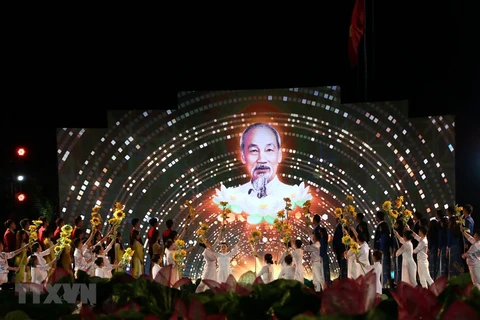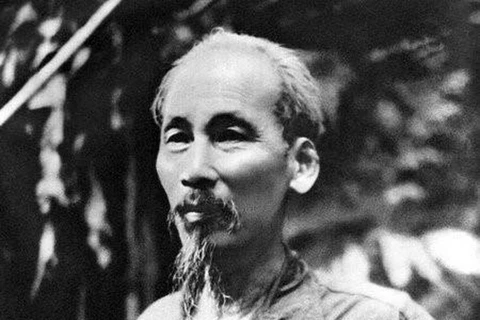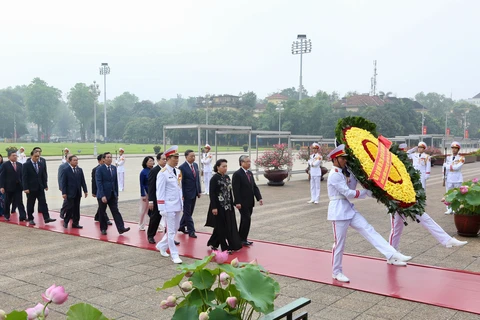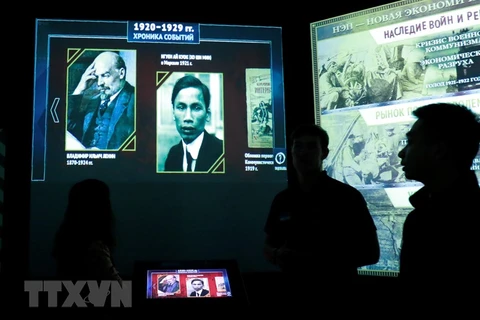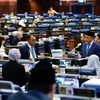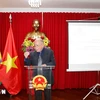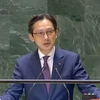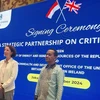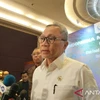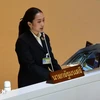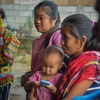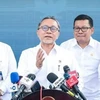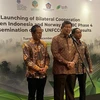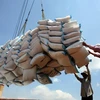 The Vietnam-Laos combatant alliance was established in 1950 under the impervious and clear-sighted leadership of the Indochinese Communist Party (File photo: VNA)
The Vietnam-Laos combatant alliance was established in 1950 under the impervious and clear-sighted leadership of the Indochinese Communist Party (File photo: VNA) Vientiane (VNA) - Had it not been for the leadership and guidance of President Ho Chi Minh, the revolution in Laos would not have been as successful as it was, according to Sounthone Sayachak, Chairwoman of the External Relations Commission of the Lao People’s Revolutionary Party (LPRP) Central Committee.
She made the comments during a recent interview with the Vietnam News Agency on the occasion of the 130th birthday of the late Vietnamese leader (May 19).
She noted that the Indochinese Communist Party, the predecessor of the Communist Party of Vietnam (CPV) and the LPRP, was established on February 3, 1930, by Ho Chi Minh, who was then known as Nguyen Ai Quoc. Since its foundation, the struggle for independence by the Vietnamese, Lao, and Cambodian peoples witnessed historic turning points and ended in glorious victories, leading to the independence of Vietnam on September 2, 1945, and of Laos on October 12 of the same year.
Under the impervious and clear-sighted leadership of the Indochinese Communist Party, the Vietnam-Laos combatant alliance was set up and, during the nine-year resistance war against the French colonialists, gained successive triumphs, in particular the historic victory of the Dien Bien Phu Campaign in May 1954 that forced the French to sign the Geneva Accords and recognise the independence of the three Indochinese countries.
The peoples of Laos, Vietnam, and Cambodia then continued to stand shoulder-to-shoulder in the fight against the US imperialists and won a resounding triumph in 1975, ending one of the fiercest wars in the history of humankind, according to Sounthone Sayachak.
She said the Lao Party, military, and people are well aware that the success of their revolution is inseparable from Vietnam’s revolution and attributable in part to the priceless and timely assistance from the CPV, President Ho Chi Minh, and the Vietnamese army and people.
It could be said that the success of the Lao revolution, the establishment and development of the LPRP, and the complete liberation of the Lao people and them following the path of socialism are due to the leadership and guidance of President Ho, the chairwoman noted.
Echoing this view, former Deputy Prime Minister of Laos Somsavat Lengsavath said that from the late 1940s onwards, President Ho Chi Minh shared Vietnam’s experience in building military resistance bases with Kaysone Phomvihane, who was later President of Laos, and this is why the late Lao leader chose Houaphanh province, which borders Vietnam, as the country’s revolutionary base.
President Ho Chi Minh also assigned General Vo Nguyen Giap to directly coordinate with Kaysone Phomvihane to help Laos develop its military. Thanks to President Ho’s sincere support and judicious recommendations, the Lao Issara (Lao Freedom) Army, now the Lao People’s Armed Forces, was established on January 20, 1949, and the Neo Lao Issara (Lao Freedom Front), now the Lao Front for National Construction, in 1950.
Somsavat Lengsavath said the Vietnamese leader’s recommendations were precise and suited the circumstances in Laos at the time, helping its revolution attain consecutive victories in national liberation and development.
Meanwhile, Kikeo Khaykhamphithoun, Secretary of the LPRP Central Committee and Minister of Information, Culture and Tourism, said President Ho Chi Minh was always a “close friend” of the Lao people and greatly contributed to the country’s revolution.
He quoted the late leader as saying that if the Lao revolution hadn’t succeeded and the colonialists hadn’t been driven out, the Vietnamese revolution and country would not have been able to survive.
The minister emphasised that President Ho Chi Minh held a crucial role in the revolution in Laos, adding that the Lao people always keep in mind his dedication and will continue to apply his advice in today’s development efforts, particularly the promotion of the special solidarity between the two countries./.
VNA
